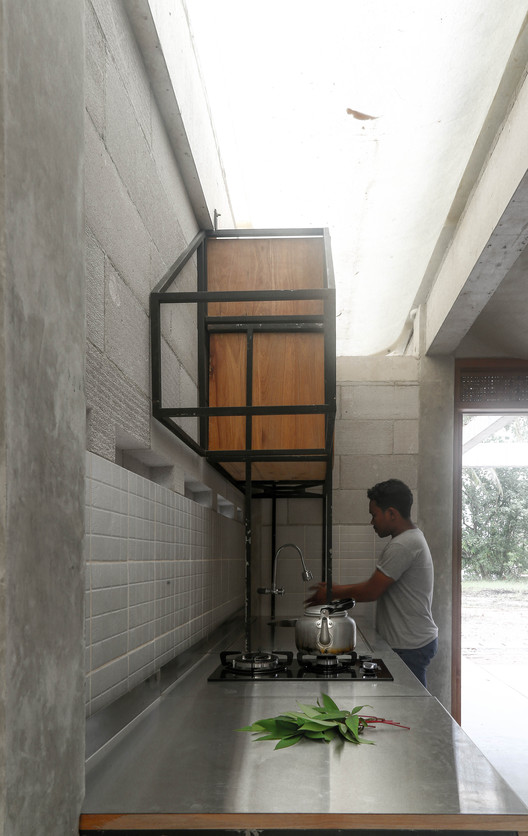
-
Architects: Urban Rural Systems
- Area: 36 m²
- Year: 2018
-
Photographs:Dio Guna Putra
-
Manufacturers: Fibreglass, Hebel

Text description provided by the architects. The expandable house (‘rumah tambah’ in Bahasa Indonesia, or rubah for short) is designed to be one part of a sustainable response to the challenges of rapidly developing cities like Batam, in Indonesia’s Riau Archipelago. Once a collection of sleepy fishing villages of a few thousand inhabitants, Batam developed to be a cosmopolitan city of over one million people in less than 40 years. This remarkable growth, fueled by a new free trade agreement and Batam’s proximity to Singapore, has not abated. Young migrants from all over Indonesia moved there to seek their fortune. By 2015 Batam was named the fastest growing city in the world. As a consequence, the city was confronted by major planning problems: How to accommodate the influx of migrants? How to provide sufficient housing, and appropriate water and sewage systems? How to fund adequate transport infrastructure, and provide schools, universities and hospitals?

The expandable house project focuses on the challenge of housing. It does so by allowing the building to be flexibly configured around the fluctuating patterns of resource consumption and expenditure, or metabolism, of its residents. Practically this means understanding the patterns of household income generation and expenditure, water, energy and food consumption, as well as waste production. As this metabolism is usually uneven and often precarious, it is important that the architecture can be a dwelling and income generating unit, that manages its own waste, water and energy locally.

The expandable house is designed around the following five principles:
1. Sandwich Section. The house provides a roof that can be hoisted, and floor and foundations (the bread) that can support up to three additional floors (the filling). This system allows flexible financing whereby the developer or state housing agency provides the roof and foundations, while the residents provide infill as their circumstances require and budget allows. It also helps accommodate crucial income generating functions (shop, café, garage, cottage industry) along with dwelling.

2. Domestic Density. The house encourages domestic densification in the vertical dimension. This supports the benefits of co-location of dwellings and employment. It also helps to reduce the settlement footprint on arable land, and the demand for expensive infrastructures (roads, electrical and potable water networks).

3. Decentralized Systems. Rainwater harvesting and solar electricity generating technologies, sewage and septic tank systems, and passive cooling principles are integrated locally with the expandable house, avoiding expensive and often unreliable centralized, or ‘big pipe’, approaches to infrastructure provision.

4. Productive Landscapes. The expandable house integrates food and building material production capacity locally. This is achieved by integrating bamboo plantations and kitchen gardens into the planning logic of the house, and helps further diversify the resource base of the expandable house.

5. Seed Package. The expandable house is designed as a seed package, containing technologies, material strategies and planning guidelines that can develop in different ways depending on local social, cultural and environmental conditions. We intend that diverse tropical towns will grow from the common seed package.




































